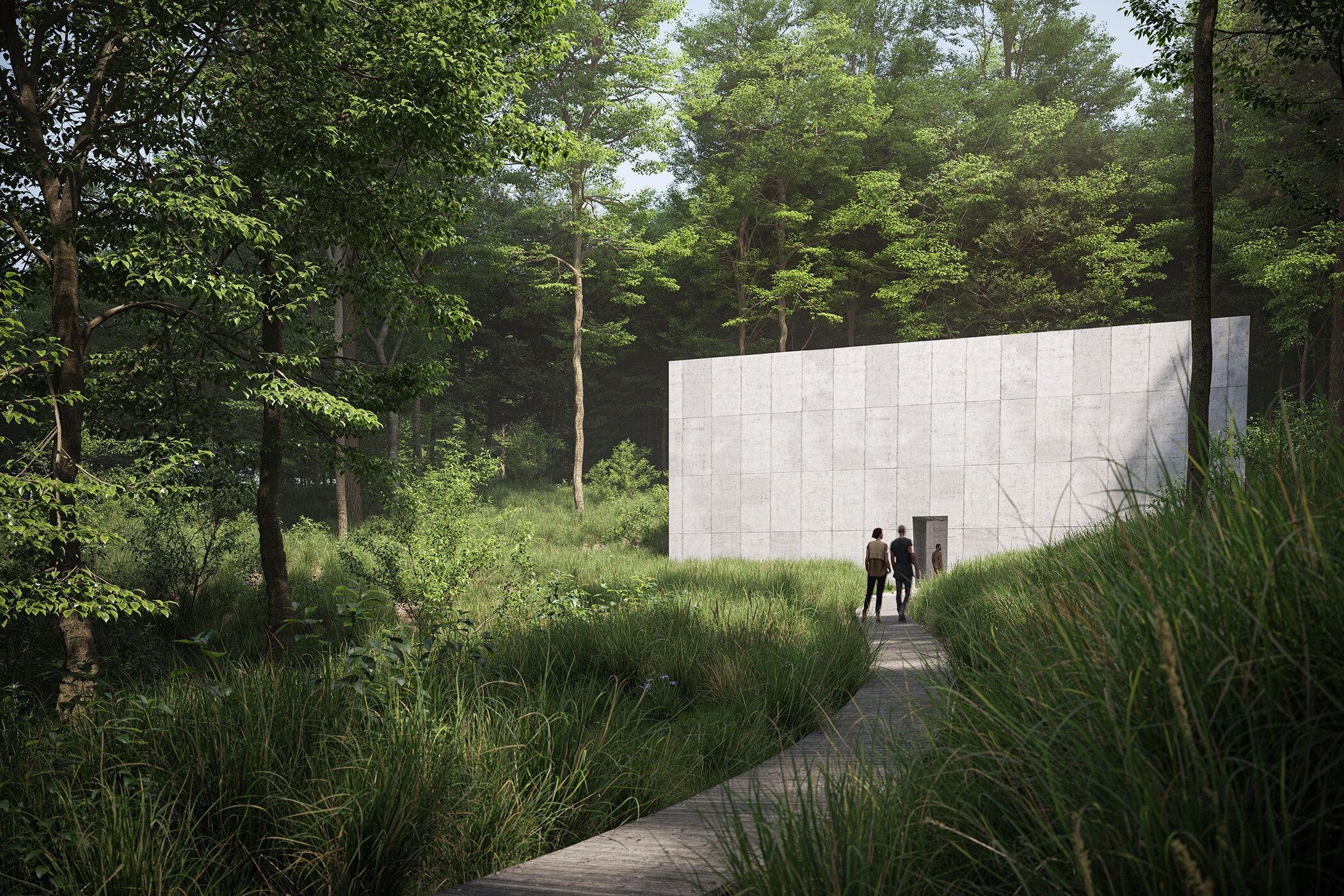While easy enough to forget, the art experience really begins before we view any artworks. From the architecture and exterior of a museum, gallery or other art space, to the way we interact with the people working there, and how we are affected by the spaces that surround the artworks themselves. There are exhibitions that stand out in our mind as memorable, but have you asked yourself why? Beyond the works themselves, art spaces serve as the backbone for the exhibition. One of these great exhibition spaces is Glenstone Museum in Potomac, Maryland.
Water Court at the Pavilions Photo: Iwan Baan Courtesy: Glenstone Museum
Glenstone is an example of what can be achieved when there’s an ability and flexibility to create an art space from scratch. Yet in this case, the interior and exterior building and landscape design matters just as much as the curated works found in its galleries. Planning the architectural design can be challenging on its own, as the space would not have the flexibility of changing like the artworks do.
Valentina Nahon, Sr. Director of Public Engagement at Glenstone, spoke with me about the importance of creating an impactful art space experience for all visitors. The Glenstone experience begins outdoors, the entry point to its sprawling 230 acre footprint. A natural growing field with small hills and distant trees reveals paths, each leading to the galleries or to outdoor sculptures, like Jeff Koons’ Split-Rocker or Tony Smith’s Smug. The sculptures are part of nature itself, where they fit seamlessly each adapted to their own unique natural setting. You won’t find more than one together, unlike a typical sculpture garden.
Jeff Koons, Split-Rocker, 2000 stainless steel, soil, geotextile fabric, internal irrigation system, and live flowering plants 37 x 39 x 36 feet © Jeff Koons Courtesy: Glenstone Museum
These outdoor spaces invite you to be curious about your surroundings, the sights and sounds, and even through the steps you may take, where small stones make sound as you walk. All these components cause you to be more present in the experience. Nature holds a space for each work you come across outdoors. One of my personal favorites is Janet Cardiff & George Bures Miller FOREST (for a thousand years…), where you are taken back in time through sound to reflect on humanity.
Nahon explains the purpose behind these art spaces:
Our mission at Glenstone is to be a place that seamlessly integrates art, architecture, and nature. The minimal design approach to both indoor and outdoor spaces is intended to facilitate meaningful encounters between our visitors and the artworks displayed, free of any distractions. The site design includes restored meadows, woodlands and streams to enhance the natural backdrop for outdoor sculptures, while the neutral building material palette complements the artworks on display.
When entering the galleries, the nature element persists, recalling the outdoor setting first experienced. The neutral wall colors, the large glass panels, and the water elements all embrace the landscape existing outdoors. The outdoor and indoor spaces interact heavily throughout the galleries, known as Pavilions. Beautiful natural light and high ceilings allow for this immersive effect in most spaces. There is a peace of mind from the mood-evoking surroundings that allow the visitor to explore at their own pace.
Installation View: Faith Ringgold From left: Faith Ringgold Jazz Stories: Mama Can Sing Papa Can Blow #1: Somebody Stole My Broken Heart, 2004 acrylic on canvas with painted and pieced border 81 in x 67 in ACA Galleries, New York Dah #3, 1983 acrylic on canvas 74 in x 58 in ACA Galleries, New York Dah #4, 1983 acrylic on canvas 74 in x 58 in ACA Galleries, New York California Dah #5, 1983 acrylic on canvas 110 in x 48 in ACA Galleries, New York California Dah #4, 1983 acrylic on canvas © 2021 Faith Ringgold / Artists Rights Society (ARS), New York, Courtesy ACA Galleries, New York Photo: Ron Amstutz Courtesy: Glenstone Museum
At times, some spaces open up fully as you walk in, like a surprise effect to expose the artwork within. It is almost like an unveiling of Glenstone’s most valuable assets, the art itself. That is in a way what galleries and museums are, they hold a space that reveals creativity in the form of Faith Ringgold, Cy Twombly, or Robert Gober, as something precious and frozen in time for the visitors to see.
Nahon tells us about Glenstone’s creative team collaboration, responsible for this entire experience:
At Glenstone, we have a series of galleries that host changing exhibitions, while others are purpose-built to house a particular artist’s work. Planning a new exhibition is a collaborative effort that begins with the artist’s vision. We have a group of talented associates with varying backgrounds and experiences that contribute to the realization of a new installation at Glenstone.
Rendering of the boardwalk approach to the new building at Glenstone Museum, conceived to house a large-scale Richard Serra work and designed in collaboration between the artist and Thomas Phifer of Thomas Phifer and Partners. Located on Glenstone’s Woodland Trail, with landscape design by Adam Greenspan/PWP. Image: The Boundary Courtesy: Glenstone Museum
This collaborative vision is necessary in all art spaces. It allows for an immersive experience that starts from the outside all the way to the core, the artwork. Spaces can adapt to the artists and their artworks, but I think it really has to be the other way around for it to create balance among the space that has already been created and what the artworks have to offer. Then, it is when the art is placed that the footprint of the space transforms to become one with the space according to its message, how interactive it is, and how the viewers respond to it.




